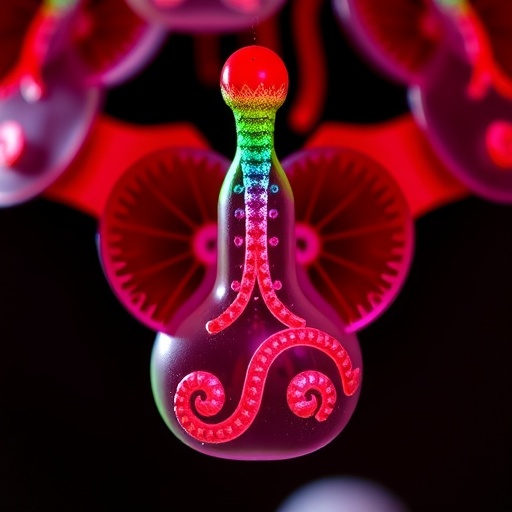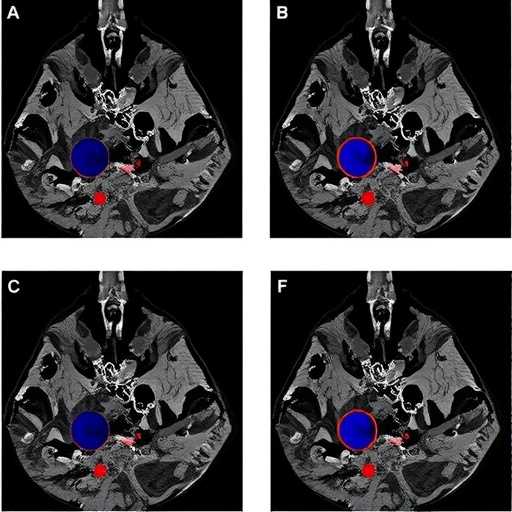In a groundbreaking study published in Science Advances, an international team of researchers led by Associate Professor Cindrilla Chumduri at Aarhus University has unveiled an intricate and dynamic immune landscape within the human uterine cervix. By harnessing cutting-edge single-cell RNA sequencing and innovative 3D organoid technologies, the research sheds unprecedented light on the sophisticated roles that cervical epithelial cells play—not as mere physical barriers but as active, immunocompetent participants in the body’s defense mechanism against infections such as Chlamydia trachomatis.
Central to this discovery is the development and utilization of patient-derived three-dimensional cervical organoids, miniature replicas of the cervical tissue that preserve cellular diversity and architecture with remarkable fidelity. These organoids were subjected to single-cell transcriptomics, allowing the team to decode gene expression patterns at an unparalleled resolution. The findings revealed a striking heterogeneity among epithelial cells, with distinct subpopulations specialized in performing discrete immunological functions. This cellular kaleidoscope transforms our conventional understanding of cervical epithelium from a static shield to a responsive and organized community orchestrating multilayered immune defenses.
The cervical epithelium is anatomically segregated into two primary regions: the ectocervix, characterized by squamous epithelial cells, and the endocervix, composed of columnar epithelial cells. The study leveraged this anatomical distinction to parse out the differential immunological roles each plays. Squamous cells on the outer ectocervical surface are tasked predominantly with reinforcing the tissue barrier, effectively creating a physical frontline against microbial invasion. Conversely, the deeper columnar cells of the endocervix act as dynamic immune signalers. They exhibit elevated expression of interferon-stimulated genes, antigen presentation machinery, and antimicrobial effectors, effectively serving as early-warning sentinels that mobilize systemic and localized immune responses.
One of the most captivating revelations of the study was the immunological priming observed in uninfected epithelial cells adjacent to infected neighbors. These bystander cells activated potent interferon pathways despite not harboring Chlamydia themselves, indicating a sophisticated intercellular communication network. This phenomenon underscores an emergent property of epithelial communities where distress signals propagate through paracrine signaling cascades to amplify immune defenses across the tissue mosaic without necessitating direct infection of every cell. Such a mechanism likely serves to contain pathogens and mitigate tissue damage by promoting a coordinated, rather than isolated, response.
Delving deeper into cellular crosstalk, the researchers identified key epithelial subtypes that function as communication hubs within the cervix, integrating environmental cues and modulating responses accordingly. These hubs harmonize signals that strike a delicate balance between immune activation and tissue repair, preventing chronic inflammation that could jeopardize reproductive tissue integrity. The intricate interplay among these diverse cell populations reveals an evolved architectural strategy to mount robust defenses while maintaining homeostasis.
Focusing specifically on Chlamydia trachomatis, the world’s most prevalent bacterial sexually transmitted infection, the study delineated the molecular underpinnings of epithelial immune responses that have long remained elusive due to the intrinsic complexity of mucosal tissues. Single-cell RNA sequencing exposed dynamic shifts in gene expression within host cells, including pronounced upregulation of interferon-mediated antiviral programs and pathways responsible for antigen processing. These findings provide critical insights into how epithelial cells detect and mount defenses against an intracellular pathogen that evades immune recognition by residing within vacuolar compartments.
The application of cervical organoids as a model system represents a significant advance beyond conventional monolayer cultures and animal models. Organoids faithfully recapitulate the cellular heterogeneity, polarity, and three-dimensionality of native tissue, allowing researchers to explore pathophysiological processes in a context that closely mirrors in vivo conditions. This platform, therefore, offers a powerful and versatile tool for mechanistic studies and preclinical testing of therapeutic interventions targeting mucosal immunity and infectious diseases.
The implications of this research extend far beyond understanding Chlamydia infection. By revealing how distinct epithelial subsets differentially contribute to immune surveillance and response, the study challenges longstanding assumptions about the passive nature of epithelial barriers. This nuanced appreciation of mucosal immunity paves the way for innovative strategies in vaccine development, particularly mucosal vaccines designed to activate local immunity at the site of pathogen entry rather than relying solely on systemic immune activation.
Vaccines that can potentiate the cervix’s intrinsic defense mechanisms hold promise for preventing not only sexually transmitted infections but also complications arising from them, including infertility and cervical neoplasia. By targeting the epithelial immune network elucidated in this study, it may be possible to develop precision vaccines that confer localized protection with improved efficacy and reduced systemic side effects, addressing a critical unmet need in global sexual health.
Furthermore, the organoid models facilitate longitudinal studies into the chronic and potentially synergistic impacts of co-infections such as human papillomavirus (HPV) and Chlamydia on cervical tissue integrity and carcinogenesis. Understanding the dynamic interactions between multiple pathogens within the epithelial milieu will illuminate mechanisms of disease progression and aid in devising targeted interventions.
The study’s identification of epithelial heterogeneity, with discrete subtypes executing specialized immunological roles, also resonates with emerging paradigms in other mucosal tissues including the respiratory, gastrointestinal, and urinary tracts. These parallels suggest that epithelial immune networks may constitute a generalizable principle of mucosal defense, offering broad translational potential for infectious and inflammatory diseases beyond reproductive health.
In sum, the integration of single-cell transcriptomic technologies with advanced organoid culture systems has revolutionized our understanding of cervical mucosal immunity. The work led by Aarhus University stands as a landmark contribution, providing a detailed cellular atlas and mechanistic insight that redefines the cervix as a frontline immunological organ. This paradigm shift holds transformative implications for the development of novel prophylactic and therapeutic approaches aimed at safeguarding reproductive health worldwide.
Subject of Research: Immune functions and cellular heterogeneity of human cervical epithelial cells during Chlamydia infection explored via single-cell RNA sequencing and patient-derived 3D cervical organoids.
Article Title: Single-cell atlas of cervical organoids uncovers epithelial immune heterogeneity and intercellular crosstalk during Chlamydia infection
News Publication Date: 3-Oct-2025
Web References:
http://dx.doi.org/10.1126/sciadv.ady1640
Image Credits: Chumduri Lab, Aarhus University
Keywords: Cervical epithelium, Single-cell RNA sequencing, 3D cervical organoids, Chlamydia trachomatis, mucosal immunity, epithelial heterogeneity, interferon response, sexually transmitted infections, mucosal vaccines, epithelial crosstalk, reproductive health, immunocompetent tissue
Tags: cervical immune landscapecervical tissue architectureChlamydia trachomatis defense mechanismsdynamic cervical epitheliumectocervix and endocervix differentiationepithelial cell heterogeneityimmunocompetent cervical cellsinnovative organoid researchmultilayered immune defensespatient-derived organoid technologySingle-Cell RNA Sequencingthree-dimensional cervical organoids





